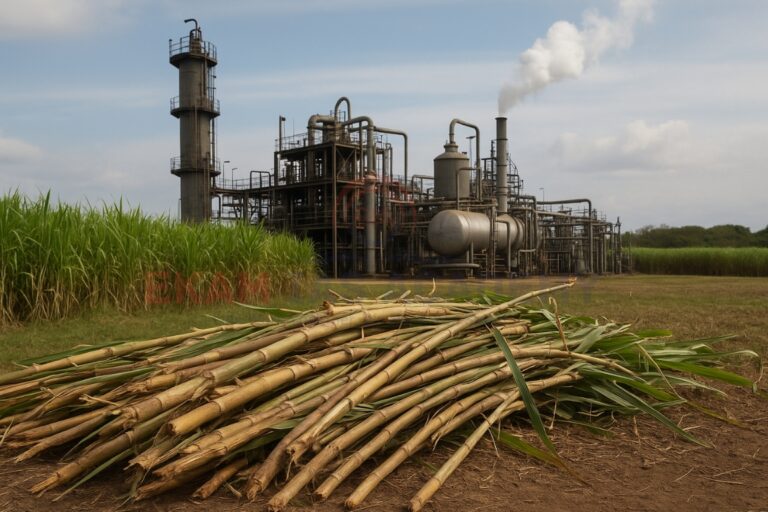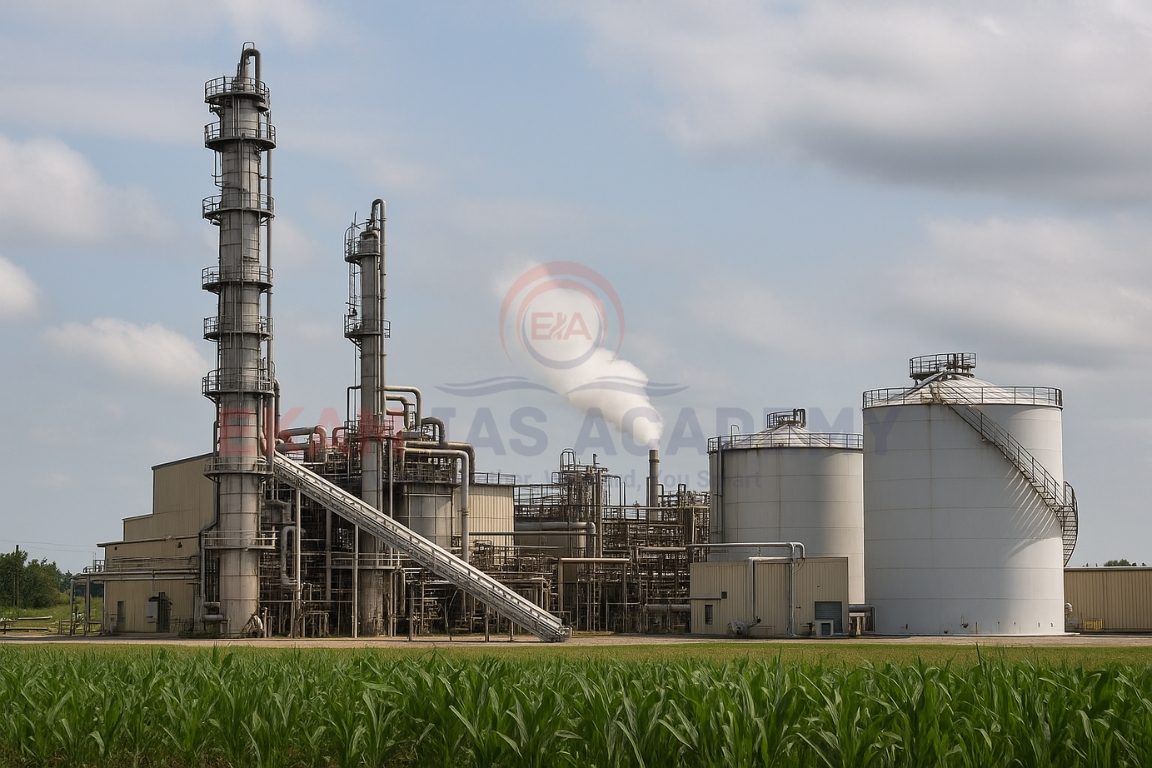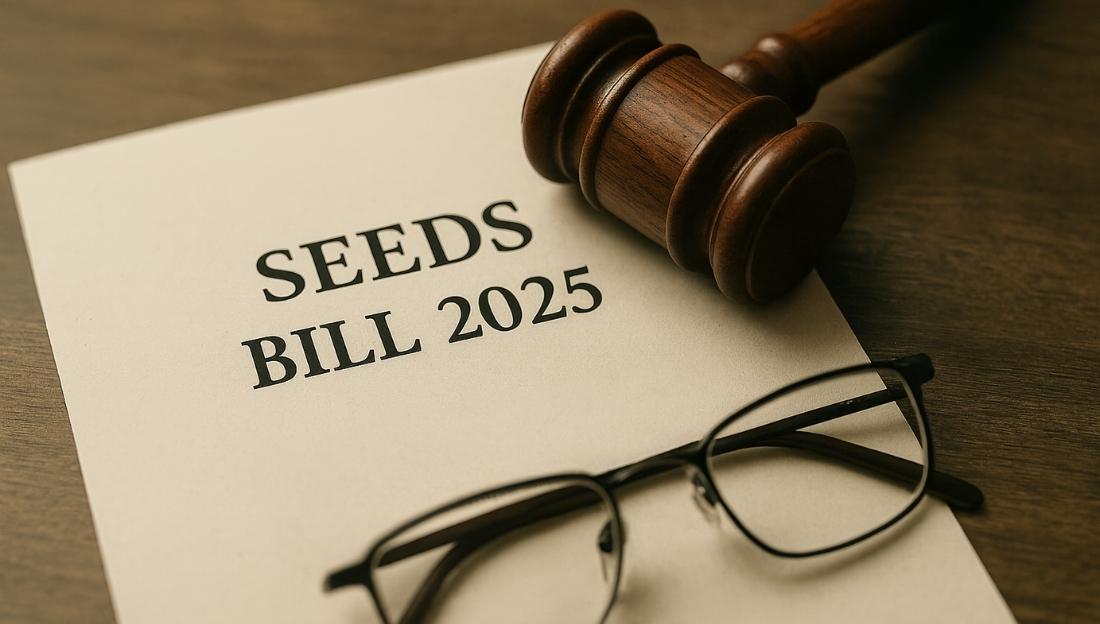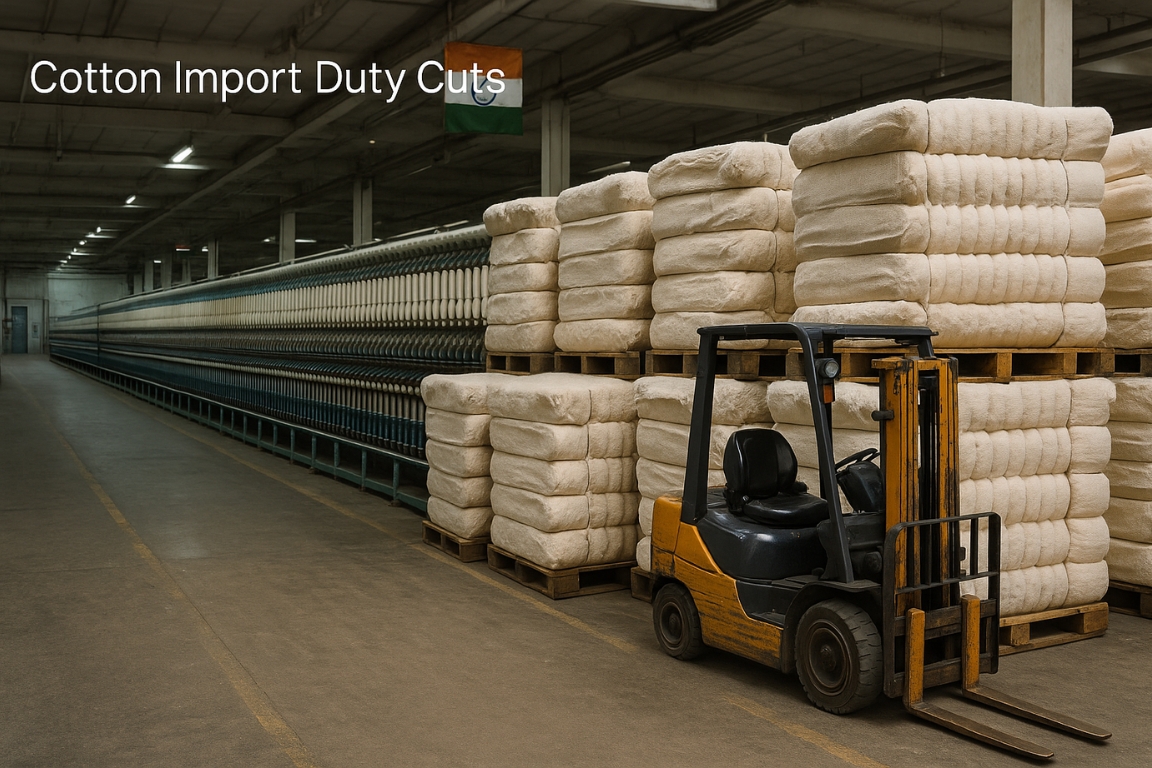The Government of India has advanced its target of achieving 20% ethanol blending (E20) in petrol by 2025. Recently, E20-compatible vehicles were launched (April 2025), sparking debates on its impact on mileage, maintenance costs, and older vehicles.
Ethanol:
- Ethanol (ethyl alcohol) is a biofuel made from biomass (plant waste).
- Acts as an oxygenate when blended with petrol, allowing cleaner and more efficient combustion.
- Sources in India:
- Sugarcane-based products: C-heavy molasses, B-heavy molasses, sugarcane juice, sugar/syrup.
- Damaged food grains: broken rice, maize.
- Advanced sources: cellulosic & lignocellulosic biomass (non-edible plant matter).
HOW ETHANOL IS PRODUCED
Raw Material Collection
- Ethanol is mainly made from sugarcane, corn, wheat, rice, or other biomass.
- Sometimes, molasses (a by-product of sugar industry) is also used.
Preparation of Raw Material
- Grains are ground into powder/flour.
- Sugarcane juice or molasses is diluted with water.
Conversion to Sugars
- Starches in grains are broken down into simple sugars using enzymes.
- This process makes the material ready for fermentation.
Fermentation
- Sugary solution is mixed with yeast.
- Yeast converts sugars into ethanol + carbon dioxide (CO₂).
Distillation
- The mixture is heated to separate ethanol from water and other impurities.
- Ethanol has a lower boiling point, so it is collected as vapor and cooled back to liquid.
Dehydration (Optional)
- For fuel-grade ethanol, water is further removed to get nearly 100% pure ethanol.
Final Use
- The ethanol can be blended with petrol (like E20, E100) or used in medicines, sanitizers, and industry.
Scientific Aspects
- Calorific Value: Ethanol has lower energy per litre than petrol → possible drop in mileage. Govt. claims losses are marginal and depend on driving habits & maintenance.
- Octane Number: Ethanol has a higher octane rating, reducing engine knocking and improving combustion. But lower energy density means less energy extracted per litre of blended fuel.
- Hygroscopic Nature: Ethanol absorbs water → risk of corrosion in fuel tanks, pipes, injectors. More impact on older vehicles with rubber parts and carburetor systems.

Global Comparison – Brazil’s Example
- Brazil started blending in 1975 (Proálcool programme), gradually moving to E27 petrol.
- Focused on research, subsidies, flex-fuel vehicles, and decades-long transition.
- India’s faster shift (E10 → E20 in just a few years) has created adaptation challenges.
Challenges in India
- Older vehicles (pre-BS VI) lack electronic control units → difficult to adapt to E20.
- Fuel system components prone to corrosion and clogging.
- Need for engine recalibration (spark timing, air-fuel ratio) in some vehicles.
- Higher initial service and replacement costs.
Way Forward
- Gradual transition with flex-fuel vehicles.
- Incentives for second-generation ethanol (non-food biomass).
- Awareness for vehicle-owners on servicing and part replacements.
- Balance between energy security, import reduction, and consumer concerns.
Conclusion
India’s ethanol blending programme promises cleaner energy, reduced oil imports, and support to farmers. However, unlike Brazil’s phased approach, India’s rapid rollout raises concerns about vehicle compatibility, corrosion, and costs. A paced, technology-driven transition with consumer safeguards will be key to long-term success.





